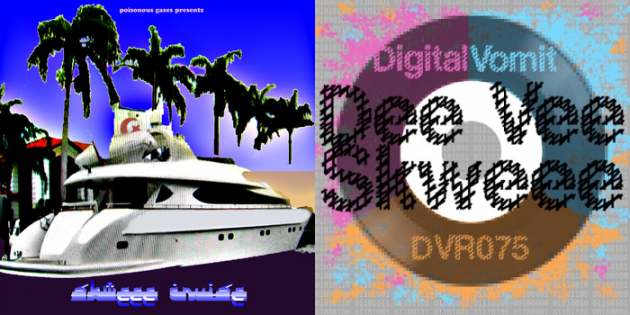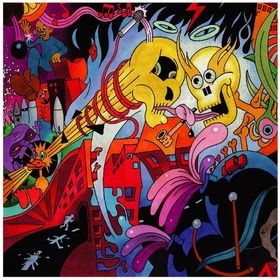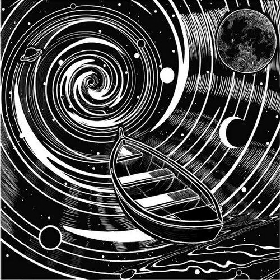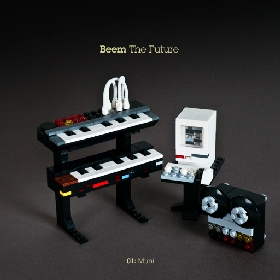
Skweee is a style of electronic music that uses synthesizer-generated melodies, basslines, and beats to produce stripped-down, largely instrumental tracks that run the gamut from dancefloor-friendly to downtempo. It originated in Sweden and Finland back in the mid-2000s, and since its inception it has slowly but surely spread to different parts of the world. Though Skweee music often carries with it nostalgic connotations, it isn’t “hazy” or retro-futurist; rather, Skweee music sounds clean and polished, an article of the present. Much of it is catchy, though it’s rarely as structured as pop music; nor is it as sonically challenging as the kind of electronic music we might call “experimental.” Skweee is too forthright to be considered purely “ambient” and too playful to fall under “minimal electro.” In essence, Skweee is electronic music at its most unpretentious, rarely attempting to make any grander statements than that of its own tunefulness. More importantly, it’s gaining traction in the global community.
But before we look at where Skweee is going, let’s examine where the genre is coming from. Depending on who you ask, Skweee began with either of two releases. Swedish producer Daniel Savio coined the term in the first place after the way he’d try to “squeeze” out different tones from his Juno synthesizer, and his 2006 single “The Bubble Bump,” released on his country’s own Flogsta Dahsnahll record label, is his earliest foray into the dub-influenced minimalism of the genre. In the same year, Finland’s Harmonia Records released producer Randy Barracuda’s 7” The Structure of Scientific Revolutions, which included the B-side “Skweee Like a Pig” and began a legacy of Skweee-related puns that reflects the genre’s playfulness and humor. Indeed, while these producers surely take their work seriously, there’s an undeniable levity to most of their music and promotion; for instance, here is a “file photo” of two American Skweee producers.
In fact, the only troubling thing about the genre is the palpable lack of female participation. The one notable exception is Portland’s Bellybelle, who earlier this year released her debut EP Tom Lives Here on the San Francisco label Titched, which, according to its Myspace page, is “the first record label based in the Americas dedicated to the music called SKWEEE.” Naturally, Bellybelle – real name Keri Brunson – also has a good sense of humor about her music. For proof, look no further than her gloriously jam-packed SoundCloud page, which includes a Skweee remix of the Golden Girls theme song. Electronic music has long been seen as a male domain, and in that sense Skweee is no different; still, given the value Scandinavia places on gender equality, one hopes that Brunson opens the doors for other female producers to enter the fray.
On the first day of the new year, Portland’s Poisonous Gases label released an 18-track compilation entitled SKWEEE CRUISE featuring an hour’s worth of squelchy electronica from both veterans of the genre (i.e. Daniel Savio, Limonious) and newcomers such as Shitaraba (from Japan), Hybakusha (from Spain), and MØ (from Copenhagen). According to label chief John Murphy, “This is not merely music, but rather the ultimate soundtrack to an unbelievable vacation!” What makes the album exciting, however, is not just its escapist predilections but also, crucially, its inherent internationality; what we have here is an American label releasing Scandinavian-based music made by artists from across the globe.
Three months later, the online label Digital Vomit, which prides itself on being “no one person behind any of it, no central office, no leadership or hierarchy,” put out its own Skwee collection. With two discs, 31 songs, and a 100-minute runtime, it’s even more massive than the Poisonous Gases release. The lead track is by a producer named Cuverville, who hails from France. Other contributors include Britain’s Mr. Pie, Russia’s Michael BaiL, and Bulgaria’s Mojo Goro. So while Murphy’s claims about the compilation’s suitability for soundtracking some “unbelievable vacation” are understandable — after all, this music’s too fun to not give off such pleasure-cruise-on-ecstasy vibes — its significance comes not from a sense of departure but rather one of arrival. That is to say: Skweee is no longer the sole province of the Swedes and Finns. Not that anyone ever argued otherwise, of course, but its global proliferation nonetheless offers a promising assurance to its forebears that their work won’t suffer from any threat of geographic remoteness or isolation.
Skweee music is a series of contradictions. It is at once constantly busy—always shoving some breakbeat or synth gurgle at the fore, robotic bass keeping time the best it can underneath—and forever sparse, which is to say, it operates on a two-dimensional spatial plane, shunning the echoing depth one might encounter in similar electronic styles like trance or deep house. If we think of electronic music as an M&M, then Skweee is just the candy shell; it is the sweetness, the sheen, the superficial joy of primary colors without the chocolate richness found in the core.
Skweee music rarely echoes or lingers; a song of the genre simply presents itself, its videogame braggadocio and its mischievous charm, and then it ends not with a graceful, patient fadeout but instead with abrupt resignation – the Game Over screen, the final cutscene, the momentary silence before another track comes bounding in to hijack the listener’s imagination. Obviously, as more artists begin to work within the genre, their output will increasingly tend to deviate from the “norm.”
Still, even at its loudest, most audacious moments, Skweee remains a minimalist genre, contained entirely within the circuitry of the synthesizer and its limited repertoire of endlessly permutating digital tones. Therefore, we see that Skweee is at once instrumentally constricted and electronically boundless; that producers continue to approach the genre is a testament to its staying power. Not as nostalgic as chiptune nor as hazy as chillwave, Skweee is unique in its balance of funk, r&b, and electro.
Recommended Listens:

Eero Johannes’s self-titled 2008 LP (including the cleverly titled track “We Could Be Skweeeroes,” which reflects another aspect of the genre’s playfulness: the predilection for Skweee-based puns).

The 2009 full-length Dirty Bomb by Daniel Savio, the Swedish producer who coined the term in the first place (after the way he’d try to “squeeze” out different tones from his Juno synthesizer).

The recently released Kosmik Regn by a Norwegian producer known as Beatbully.

Swedish producer Beem’s 2008 The Future, which offers a more downtempo take on the genre.

Randy Barracuda’s 2009 self-titled release, featuring the aptly-named “Sweee Like a Pig”.

